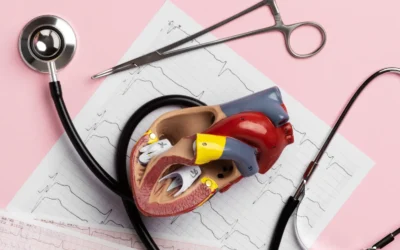Cardiovascular disease (CVD) continues to be the leading cause of death in women globally, claiming more lives each year than all forms of cancer combined. Despite this staggering statistic, public awareness and clinical attention around women’s heart health have lagged behind. Research, funding, and diagnostic standards have historically centered around male biology, contributing to widespread disparities in how women are assessed, diagnosed, and treated for heart disease.
A recent article published in the Journal of the American College of Cardiology underscores this urgent crisis, highlighting the structural and biological challenges that continue to fuel the global burden of CVD in women. While medical science has advanced in many areas, the gender gap in cardiovascular care remains one of its most pressing—and remediable—failures.
Table of Contents
Why Women Experience Heart Disease Differently
Cardiovascular disease does not manifest the same way in women as it does in men. Many women experiencing heart disease present with symptoms that do not conform to the traditional textbook descriptions. Unlike men, who often report chest pain as the hallmark symptom of a heart attack, women may experience subtler signs like unexplained fatigue, shortness of breath, nausea, or pain in the jaw, neck, or back. These atypical symptoms are often misdiagnosed or dismissed, both by patients themselves and by healthcare providers, which can delay lifesaving interventions.
Biological factors such as hormonal changes, particularly around menopause, play a significant role in altering cardiovascular risk in women. Estrogen, which has a protective effect on the inner layer of artery walls, declines during menopause, increasing vulnerability to plaque buildup and arterial damage. Additionally, pregnancy-related complications like preeclampsia, gestational diabetes, and preterm delivery have been identified as predictors of future heart disease, often decades after childbirth. These unique reproductive risk factors are still not routinely integrated into cardiovascular risk assessments, reflecting a systemic gap in preventive care.
The Structural Disparities in Cardiovascular Research and Care
One of the key issues driving poor outcomes in women’s heart health is the underrepresentation of women in clinical trials. For decades, cardiovascular research has disproportionately enrolled men, resulting in diagnostic criteria, treatment protocols, and pharmaceutical guidelines based largely on male physiology. As a consequence, healthcare professionals are often less equipped to recognize or treat cardiovascular conditions as they appear in female patients.
Implicit bias in healthcare settings also plays a significant role. Studies have shown that women with symptoms of heart disease are less likely to receive aggressive testing or intervention compared to men with similar complaints. Even when women do receive care, they may be offered fewer evidence-based therapies or have their concerns minimized. These patterns contribute to delayed diagnoses, poorer long-term outcomes, and higher mortality rates in women experiencing heart-related events.
Addressing these structural inequalities requires systemic change—starting with equal representation in clinical research and continuing with education that equips physicians to recognize gender-specific risks and presentations.
Moving Beyond Awareness to Action
Raising public awareness about the unique nature of heart disease in women is critical, but awareness alone isn’t enough. A comprehensive strategy is needed, one that includes research reform, public health campaigns, and policy initiatives that center women’s cardiovascular health.
First, it is essential that research institutions and regulatory agencies mandate gender equity in study design and recruitment. Women must be adequately represented in trials if we are to develop precise diagnostic tools and treatments tailored to their needs. Alongside research, continuing education for healthcare professionals should emphasize the importance of sex-specific risk factors and the necessity of early, accurate assessment.
Public health campaigns should move beyond generic messages about heart health to provide women with actionable knowledge. This includes educating women about the warning signs that are more common among female patients and encouraging them to advocate for appropriate testing if they suspect something is wrong. Empowerment begins with information, but it must be supported by a system willing to listen.
Preventing Heart Disease in Women: What Can Be Done?
Reducing the global burden of cardiovascular disease in women starts with prevention. Many of the most effective interventions are within reach but require a tailored approach. For example, regular monitoring of blood pressure, cholesterol levels, and glucose can help detect early markers of cardiovascular risk, especially in women with a history of pregnancy complications or autoimmune conditions like lupus and rheumatoid arthritis, which are more prevalent among women and associated with higher cardiovascular risk.
Lifestyle factors also play a powerful role. Regular physical activity, a balanced diet, avoiding smoking, and stress management can significantly lower a woman’s risk of developing heart disease. Importantly, these measures should be framed not just as individual responsibilities but supported by community programs and policies that facilitate healthy living—particularly in underserved populations where access to healthcare and nutritious food is limited.
Mental health, too, is an overlooked aspect of cardiovascular prevention. Women are more likely than men to suffer from depression and anxiety, both of which have been independently linked to poor cardiovascular outcomes. Addressing psychological well-being should be part of any holistic heart health strategy.
Looking Ahead: Building a Gender-Inclusive Model of Care
If there is one message that emerges clearly from the current evidence, it is that cardiovascular disease in women must be treated as a distinct and urgent public health challenge. This means developing gender-specific guidelines, investing in research that prioritizes female biology, and building healthcare systems that are responsive to women’s unique needs.
Policy makers and healthcare institutions have an opportunity—and a responsibility—to lead this transformation. That includes allocating resources toward educational campaigns, integrating women’s reproductive and cardiovascular histories into routine care, and expanding access to preventive screenings and specialized services.
As a society, we cannot afford to let outdated assumptions and structural biases continue to cost women their lives. By shifting our approach from one-size-fits-all to precision care for women, we can reverse the current trajectory and dramatically improve outcomes in heart health.
Conclusion
The evidence is clear: heart disease in women is real, common, and too often ignored. Understanding the unique ways cardiovascular conditions affect women is not just a matter of clinical precision—it’s a matter of life and death. As awareness grows, so must action, from the exam room to the research lab to the halls of public policy.
By closing the gender gap in heart care, we not only save lives—we build a healthier future for everyone.
For additional reading, view the full research article on ScienceDirect.





0 Comments